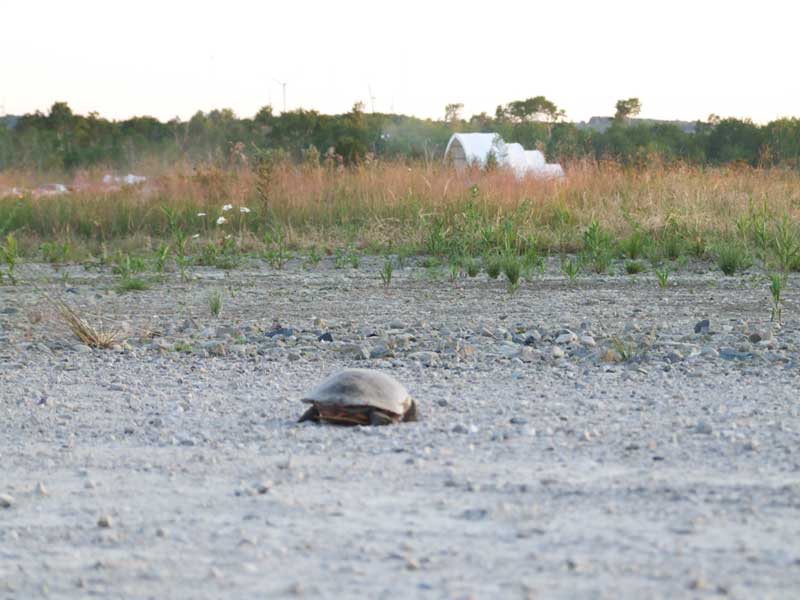MANITOULIN – The Nature Conservancy of Canada (NCC) is asking motorists to give turtles a brake. It is shining a light on declining turtle populations in Canada due to collisions with vehicles.
We are now in an active period when turtles are moving from their usual habitats and motorists encounter turtles on busy roads in major centres, on back roads or on the way to the cottage. Turtles are vulnerable especially between now and October. They spend most of their lives in a small area, but sometimes wander as far as ten kilometres. Like other reptiles, turtles are cold-blooded so basking on gravel, sandy road sides or warm asphalt feels good on cool spring days. Adult turtles set out to mate and find nesting sites. In late summer and early fall, newly hatched turtles travel from their nest to a nearby wetland or water body. While a turtle’s shell can protect them from predators, it’s no match for a car.
Turtle deaths are a major issue in some parts of the country. For example, all eight turtle species in Ontario are at risk. The Blanding’s turtle is more endangered than pandas. In Quebec, six turtle species are provincially designated as threatened or vulnerable.
When a turtle is struck by a car, it can have a bigger impact than just the loss of that one turtle. Studies show just a five percent increase in annual mortality can put an entire population at risk of decline. The death of one turtle has a big impact on the population as a whole. Turtles may take up to 25 years before reproducing, and their egg survival rate is very low. Approximately only two eggs out of 100 become adult turtles. A loss of one adult turtle is the loss of 20 years of development. To maintain their numbers within a population, turtles therefore count on the survival of the adults, especially the females.
The NCC encourages motorists to slow down when they see a turtle on the road and check to be sure they can safely steer around it. NCC has also produced a video with tips on how drivers can help return wayward turtles to safety.
“Turtles are not just adorable, they’re an important part of wetland ecosystems,” said Kristyn Ferguson, NCC program director. “They help keep wetlands clean and healthy by eating dead plants, insects and animals, and play the role of the wetland janitor.”
To help a turtle safely cross the road, first make sure the road is safe for you to pull over and help. Put your safety first.
Move the turtle in the direction it was going, otherwise it will likely try to cross again.
For turtles that hide their heads in their shells (like the Blanding’s turtle and the Midland painted turtle), simply pick the turtle up and carry it across the road. Carry it close to the ground — you don’t want to drop it.
Snapping turtles weigh as much as 34 kilograms (75 pounds) and have heavy, spiked tails and massive armoured shells. These turtles cannot hide their heads in their shells and have a dangerously sharp snout.
Snapping turtles are big and grey. To move them and avoid injury, lift using the “handles” on either side of their tales on the back of their shells and “wheelbarrow” them across the road on their front legs. If you have a car matt or a shovel, carefully slide the turtle onto this and drag it across.
Back away, and let the turtle be. You don’t want to cause stress.
Pushing or shoving turtles across roads with your feet or sticks isn’t advisable. Their shells aren’t as thick underneath, and rough pavement can do a lot of damage.
Other threats to turtles include habitat loss, invasive species and illegal collection for the pet trade.





